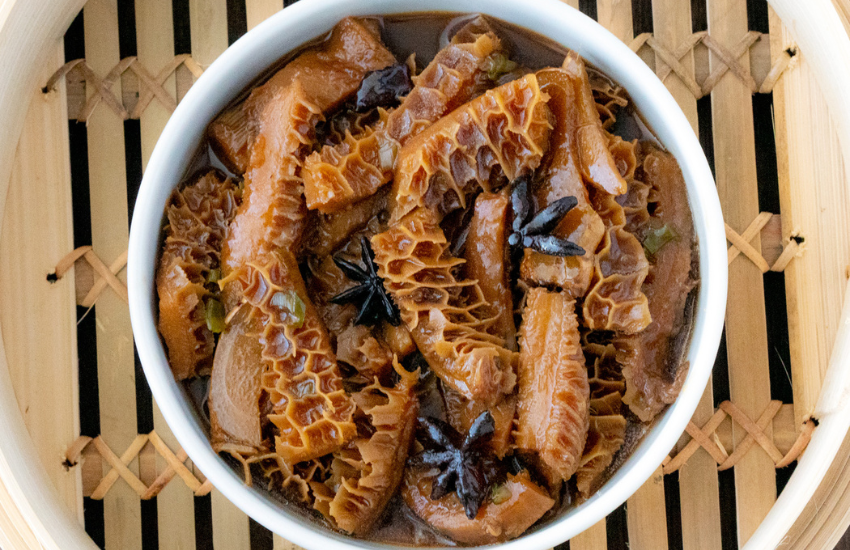Tripe is a versatile and nutritious food that has been consumed for centuries in various cultures around the world. It is most commonly known as the edible lining of the stomachs of ruminant animals like cows, sheep, and goats. Though it might not be as popular or common in modern Western diets, tripe remains a beloved ingredient in many traditional dishes from Europe, Asia, and Latin America. This unique ingredient is rich in nutrients and offers several health benefits, making it a valuable addition to diverse cuisines. In this article, we’ll explore tripe’s nutritional value, how it’s used in cooking, and its many potential health benefits.
Contents
Tripe Bio Profile
| Name | Tripe |
|---|---|
| Source | Edible stomach lining of ruminant animals (mainly cows) |
| Nutritional Value | High in protein, low in fat, rich in vitamins and minerals |
| Common Types | Honeycomb tripe, Blanket tripe, Reed tripe |
| Uses in Cooking | Soups, stews, sausages, and fried dishes |
| Culinary Origin | Popular in Europe, Asia, Latin America |
| Health Benefits | Supports digestion, boosts immune health, high in collagen |
| Calories per 100g | Approximately 85 kcal |
Tripe has been a staple food in many cultures for centuries, with different regions preparing it in unique ways. While it may have fallen out of favor in some places due to its unfamiliar texture and taste, it is still prized for its affordability, flavor, and nutritional benefits.

What Is Tripe?
Tripe is the inner lining of the stomachs of ruminant animals, typically cows, but also sheep and goats. The stomach of these animals is divided into several compartments, and each part produces a different type of tripe. The most commonly consumed type is honeycomb tripe, which comes from the second stomach chamber of the cow (the reticulum) and is named for its distinctive honeycomb-like texture. Other types include blanket tripe, which comes from the first stomach chamber, and reed tripe, from the third.
Before consumption, tripe undergoes a cleaning and bleaching process to remove any impurities and make it more palatable. It is then typically boiled to tenderize it, as its natural texture can be quite tough and rubbery. Once prepared, tripe can be incorporated into a variety of dishes, ranging from soups and stews to stir-fries and even sausages.
Culinary Uses of Tripe: A Global Favorite
1. Tripe in European Cuisine
In Europe, tripe has long been a popular ingredient in various traditional dishes. In Italy, for example, “Trippa alla Fiorentina” is a classic dish made by simmering tripe in a rich tomato sauce with onions and herbs. Similarly, in France, tripe is featured in dishes such as “Tripes à la mode de Caen,” a slow-cooked stew that originated in Normandy and includes vegetables, wine, and sometimes brandy.
In Spain, callos is a famous tripe dish that typically includes chorizo and morcilla (blood sausage), and is served as a hearty stew. It is especially popular in Madrid, where Callos a la Madrileña is a staple on traditional menus. Each of these European dishes highlights the ability of tripe to absorb flavors, making it a favorite ingredient for slow-cooked, flavorful meals.
2. Tripe in Asian Cuisine
Tripe is also commonly used in many Asian cuisines. In China, it is a key ingredient in Cantonese-style dim sum dishes such as niù zá, where beef tripe is braised in a flavorful broth of soy sauce, star anise, and other spices. In Korea, tripe is grilled or stir-fried and served with vegetables in a dish called gopchang, which refers to both the intestines and the tripe of a cow.
In Vietnam, tripe is often added to the popular noodle soup dish, pho, where its chewy texture complements the soft noodles and tender beef. Meanwhile, in Japan, tripe appears in horumonyaki, a type of barbecued offal, which is grilled and served as part of casual dining experiences in izakayas (Japanese pubs).
3. Tripe in Latin American Cuisine
Tripe is highly popular in Latin American cuisine as well. In Mexico, menudo is a famous tripe-based soup made with a flavorful broth of chilies, garlic, and lime, often eaten as a remedy for hangovers. In Peru, tripe is used in cau cau, a dish that combines tripe with potatoes and spices, and is often served with rice.
These global dishes showcase tripe’s versatility and its ability to blend with a wide variety of ingredients and spices. While its taste and texture might be an acquired taste for some, it remains a beloved ingredient in many cultures around the world.
Nutritional Value of Tripe
One of the key reasons tripe has endured as a food staple in so many cultures is its impressive nutritional profile. Although relatively low in calories, tripe is packed with essential nutrients that make it an excellent addition to a balanced diet.
High Protein Content
Tripe is an excellent source of protein, which is vital for the growth, repair, and maintenance of tissues in the body. With about 12 grams of protein per 100 grams, tripe provides a high-quality, complete protein source that includes all essential amino acids. This makes it a great option for those looking to increase their protein intake without consuming a lot of fat or calories.

Rich in Vitamins and Minerals
Tripe is also rich in several important vitamins and minerals. It is an excellent source of vitamin B12, which supports nerve function and helps maintain healthy blood cells. Additionally, tripe contains good amounts of zinc, phosphorus, and selenium—minerals that are essential for immune health, bone strength, and metabolic function. Zinc, in particular, is vital for wound healing and boosting the immune system, while selenium plays a key role in protecting the body against oxidative stress.
Low in Fat and Calories
Compared to other organ meats and cuts of beef, tripe is relatively low in fat, making it a healthier option for those looking to reduce their fat intake. With approximately 85 calories per 100 grams, it can be a great option for people trying to manage their weight while still consuming nutrient-dense foods.
Rich in Collagen
Another benefit of tripe is its high collagen content. Collagen is a type of protein that is important for maintaining the health and elasticity of the skin, joints, and connective tissues. Regular consumption of collagen-rich foods like tripe may help improve skin health, reduce joint pain, and support overall bodily function as we age.
Health Benefits of Tripe
The combination of nutrients found in tripe offers numerous potential health benefits. Some of the most notable health advantages include:
1. Improved Digestion
Tripe contains a significant amount of gelatin, which can help promote healthy digestion. Gelatin is known to aid in the repair of the stomach lining and support the growth of beneficial gut bacteria, which are essential for overall digestive health. For people with digestive issues, including foods rich in gelatin and collagen, like tripe, may provide relief and support healthy gut function.
2. Supports Bone Health
The high levels of calcium and phosphorus in tripe are beneficial for maintaining strong bones and teeth. These minerals work together to promote bone density and prevent conditions like osteoporosis. Regular consumption of tripe, along with a diet rich in other bone-boosting foods, can contribute to long-term skeletal health.
3. Boosts Immune Function
Zinc and selenium, both found in significant amounts in tripe, play key roles in supporting immune function. Zinc is involved in the production of immune cells, and adequate intake can help the body fight off infections more effectively. Selenium, meanwhile, has antioxidant properties that help protect cells from damage, reducing inflammation and promoting overall immune health.
4. Promotes Skin and Joint Health
As mentioned earlier, tripe is rich in collagen, which is known for its benefits in promoting healthy skin and reducing the signs of aging. Collagen helps maintain skin elasticity and hydration, keeping the skin smooth and youthful. Additionally, collagen is important for joint health, as it helps cushion the joints and maintain the integrity of cartilage. Consuming tripe may, therefore, contribute to reducing joint pain and stiffness.
Conclusion
Tripe, though often overlooked in modern Western diets, remains a nutrient-packed and versatile ingredient that has been enjoyed for centuries in cultures across the globe. Its high protein content, low calorie count, and wealth of vitamins and minerals make it a valuable addition to any diet. From its culinary uses in European stews and Asian stir-fries to its role in supporting digestive, bone, and immune health, tripe offers numerous benefits that make it worth considering.
Whether you’re looking for a new culinary adventure or seeking nutritious, collagen-rich foods to support your health, tripe is a food that deserves attention for both its flavor and its nutritional value.







